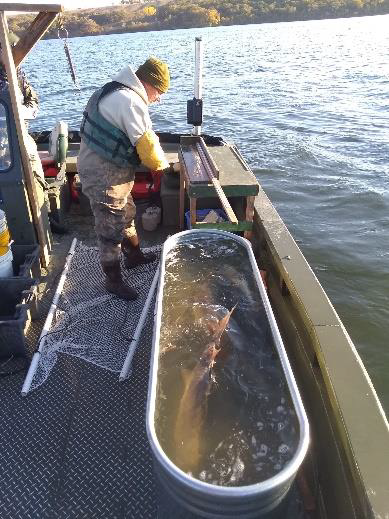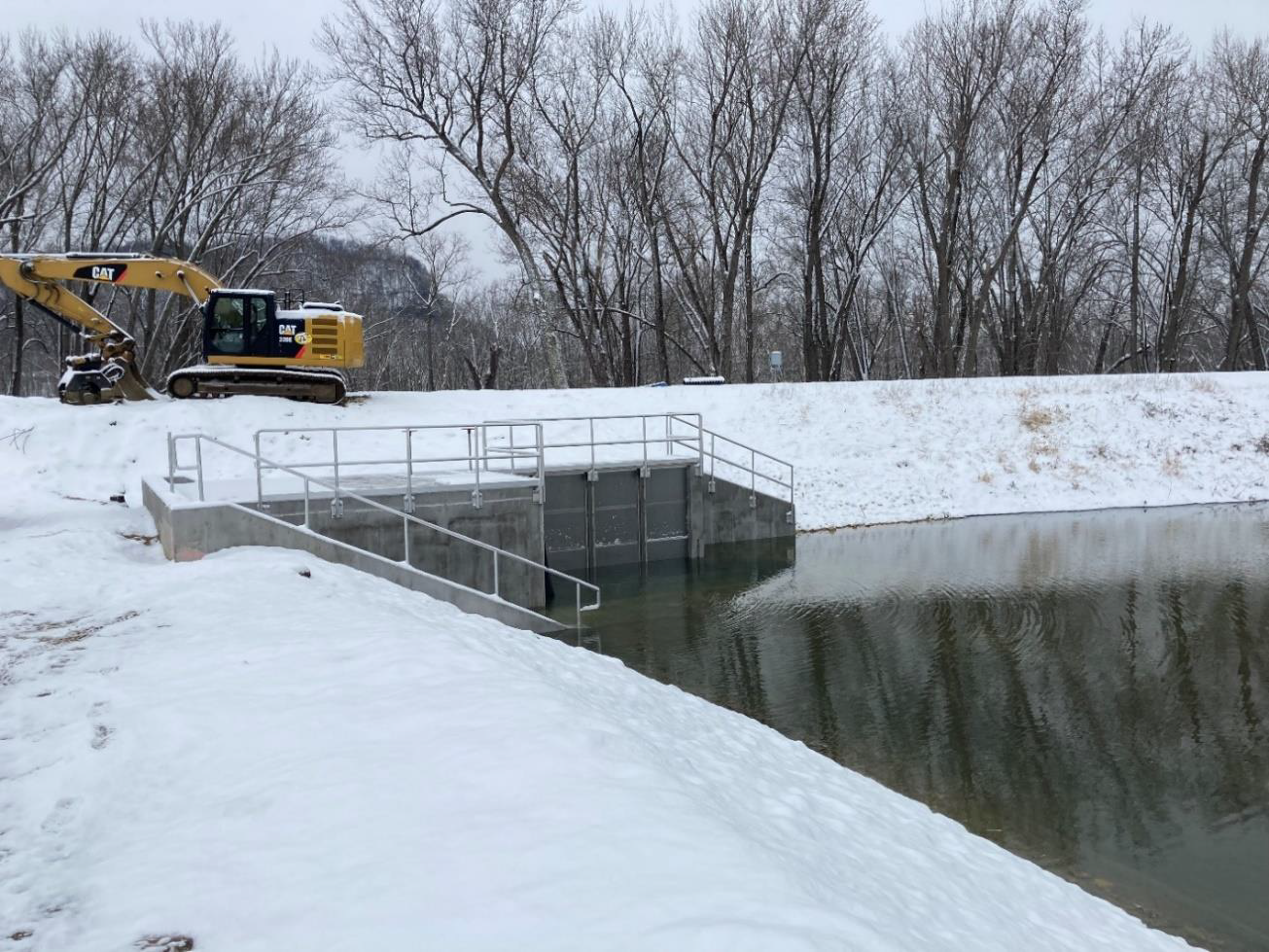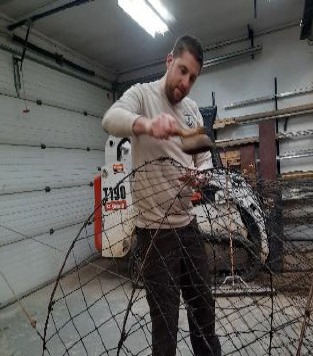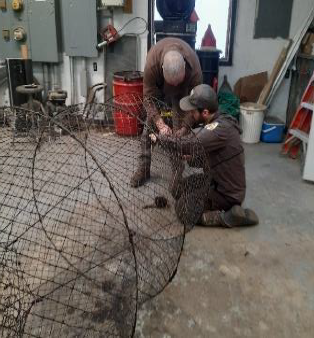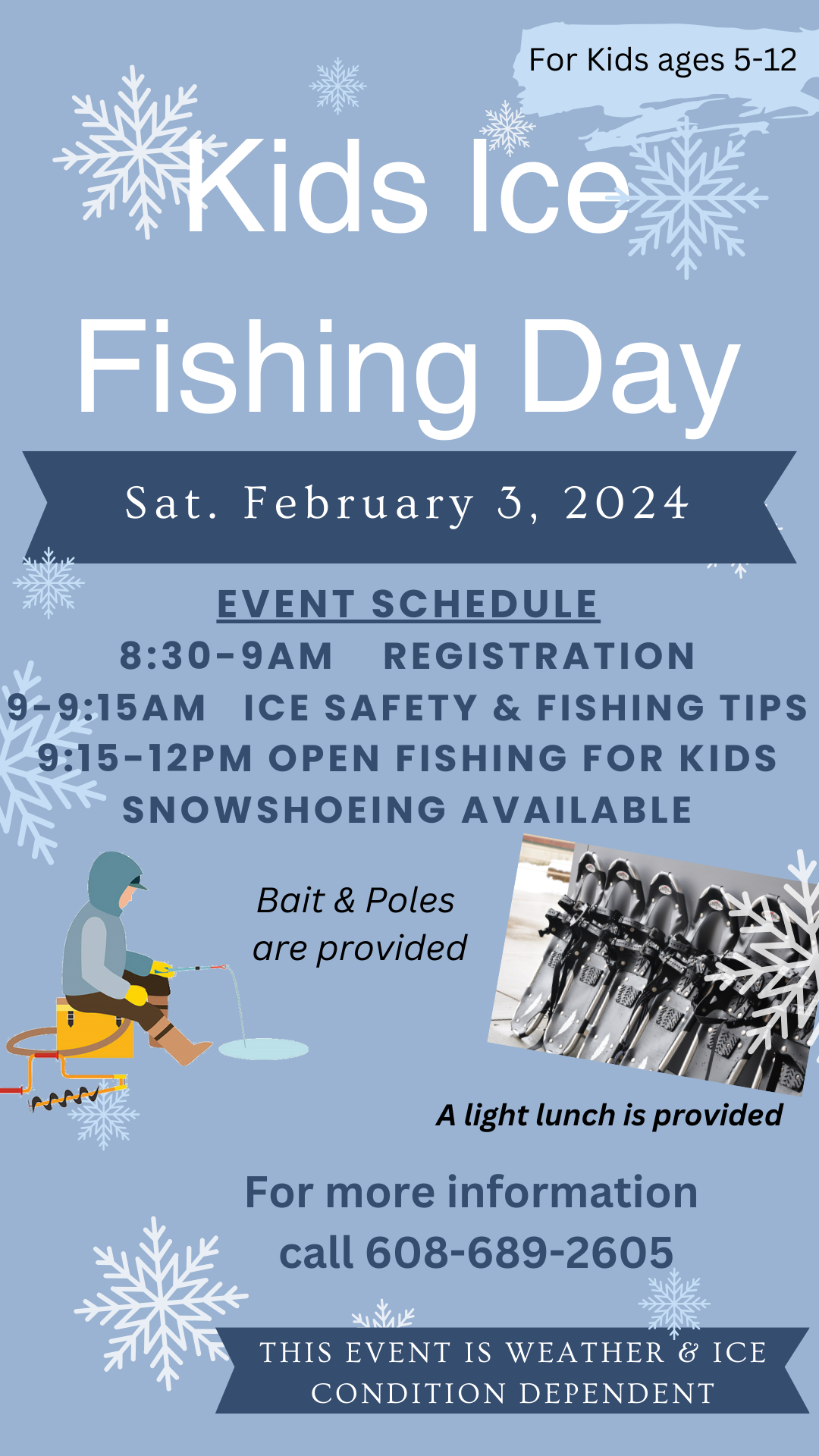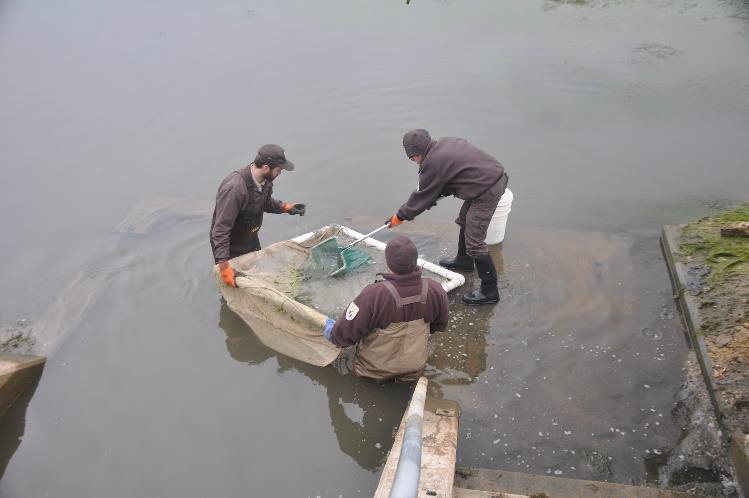Big Stone Lake, located on the South Dakota – Minnesota border was once home to abundant numbers of lake sturgeon. Many factors including over harvest and poor water quality led to an extirpated population of lake sturgeon by 1946. Currently South Dakota Game, Fish and Parks, Minnesota Department of Natural Resources and USFWS are partnering to restore historic populations. In 2014, Genoa National Fish Hatchery joined the restoration efforts by supplying fingerling lake sturgeon at approximately 8 inches of length for stocking in the fall. The fish are offspring of adult lake sturgeon from the Wisconsin River, collected by the Wisconsin Department of Natural Resources. The restoration plan calls for the stocking of up to 4,000 fish per year for 20 years. This year 4,005 sturgeon were stocked and to date a total of 41,518 lake sturgeon have been stocked into Big Stone Lake. Annual surveys by the Minnesota Department of Natural Resources had captures of lake sturgeon in year 2023 exceeding 50 inches in length. It’s safe to say these fish are growing and thriving. With continued cooperation between agencies the goal of restoring a historic population of lake sturgeon to Big Stone Lake is becoming a reality. By: Orey Eckes
Lake Sturgeon being tagged, measured and released back into Big Stone Lake by MN DNR. Photo Credit: MN DNR
